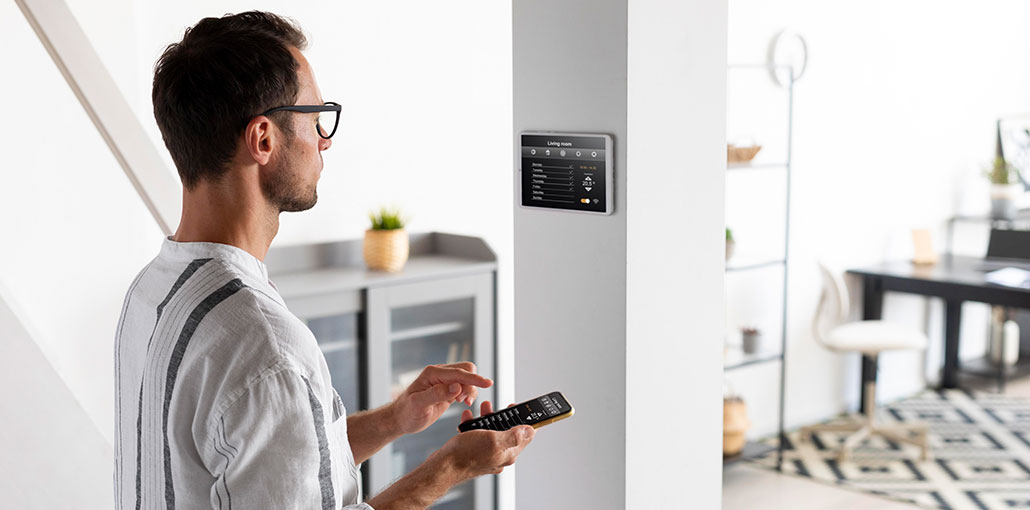People are busier than ever. They are spending less time at home, increasing the demand for remote residential security monitoring. More individuals are investing in smart security systems, and professionals recognize challenges related to hacking.
Skilled criminals can interfere with a security device’s connection and access personal information. In response, engineers are evaluating the hacking complications and developing workable solutions. It is essential to consider the different systems and their risks before assessing hack-prevention methods.
How Residential Security Systems Work
There are two different types of security systems — wire-connected and wireless. Older home security devices connect using internal wires, increasing their costs and installation challenges. Wire-reliant systems are less vulnerable to hacking because of their location-based data center.
Newer systems use smart technology and connect wirelessly. A radio-wave Bluetooth connection allows a resident’s sensors, cameras, and microphones to relay information to a smartphone. Using Bluetooth and cloud technology increases a hacker’s ability to manipulate a home security system.
Many consumers invest in wireless security devices because of their convenience. They are also compatible with other home automation systems, helping residents control their homes’ features from their mobile devices. The technology can increase a homeowner’s protection and energy efficiency.
It is essential to minimize hacker interference to ensure the functionality of a system. Before exploring hacker prevention methods, it’s vital to assess the vulnerability aspects of the home security system.
Also read: Top 4 Tips to Secure Your WIFI Network
How Hackers Get Into Home Security Systems
Hackers use various methods of gaining access to a home security system’s data. Phishing is the most common form of hacking using social engineering. Criminals search for residents’ usernames and passwords by going through their text messages, emails, and social media accounts.
Some phishers create fake websites, asking individuals to log in using a memorable username and password. Hackers take the information and apply it to a homeowner’s security system in hope of gaining access. Other criminals use the programming attack method to gain complete administrative control.
Another common and more time-consuming hacking tactic is brute-force attacks. The method requires guessing a homeowner’s login information until they gain access. Because systems lock after multiple failed attempts, it can take weeks for a hacker to get into a security system.
Similar to the programming method, man-in-the-middle captures data packets to gain password information. They hack into the system, listening for login information passed between the sender and receiver. Hackers can also use the physical access method to take over a physical device.
Your router also increases your vulnerability to cyberattacks. A new hacking technique uses Wi-Fi interference to monitor residential security systems remotely. Fortunately, there are various ways to minimize your devices’ vulnerability to hacking.
Hack Prevention Methods
Home security may effectively discourage crime. When a burglar arrives at a house with alarms, motion-detection lights, and monitors, they second-guess the efficiency of their break-in efforts. Unfortunately, some invaders recognize the challenge and look to outsmart the system with hacking tactics.
Residents can use different protection methods to ensure the security of their smart home systems. The first technique involves choosing secure login information. You may protect your password by differentiating it from others.
Individuals can also change their router passwords from those they come with to further increase a system’s protection. It is also helpful to change your passwords frequently, limiting a hacker’s ability to guess your current login information. Residents should keep their login credentials to themselves, only sharing them with individuals they trust.
Residents may additionally secure their systems by enabling encryption. The feature keeps digital data safe using various algorithms and decrypts login info using a key. It also converts sensitive information into unreadable scripts for unauthorized individuals.
Homeowners can also update their firmware to reduce hacking risks. Hardware professionals create firmware to tackle new malware and additional hacking methods. Each time a developer updates the technology, you may need to update your security system.
Some systems come with autonomous router updating features, reducing stress on residents. You can also check your router’s security settings to increase its protection against hackers. Most modern Wi-Fi technology comes with a Wi-Fi Protected Access 2 (WPA2) setting.
The system protects a user’s password from intruders. Individuals should check their router’s settings to ensure it is using the WPA2. They can also turn off unnecessary features to minimize a hacker’s access to login information.
Many security systems and routers have advanced features individuals rarely use. Unless a setting is entirely necessary, they should be turned off. The universal plug-and-play setting is problematic because it increases an intruder’s access to sensitive information.
Also read: 10 Best Password Manager Apps Uses in 2021
Benefits of a Protected Security System
When people take steps to protect their home security systems, they can access its full benefits. A significant advantage of installing an efficient system is the reduction in home insurance premiums. Individuals can receive up to 20% off their insurance fees after installing security devices.
Additionally, smart security systems can reduce a homeowner’s emissions and utility costs. They help individuals remotely monitor and control their lights, heating systems, and more, turning off unnecessary electric devices in a vacant home. Smart systems also minimize a resident’s stress levels.
Automatic devices can lock doors and windows when you leave your home without buttons or other signals. The wireless connection also allows residents to check on their property when they are away. Similarly, individuals can double-check their locks at night without getting out of bed.
Considerations Before Installing a Security System
Before you install a home security system, consult the distributor about its hacker-prevention features. Some manufacturers increase the WPA settings to strengthen a device’s defense against intruders. You may also consider the automation features to minimize your concern surrounding updates.
Being proactive can strengthen your security system’s defenses against hackers and intruders and put your mind at ease.










Leave a comment